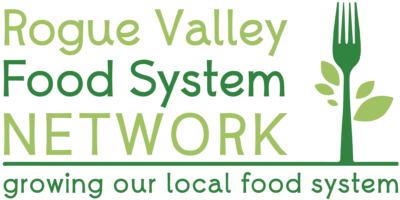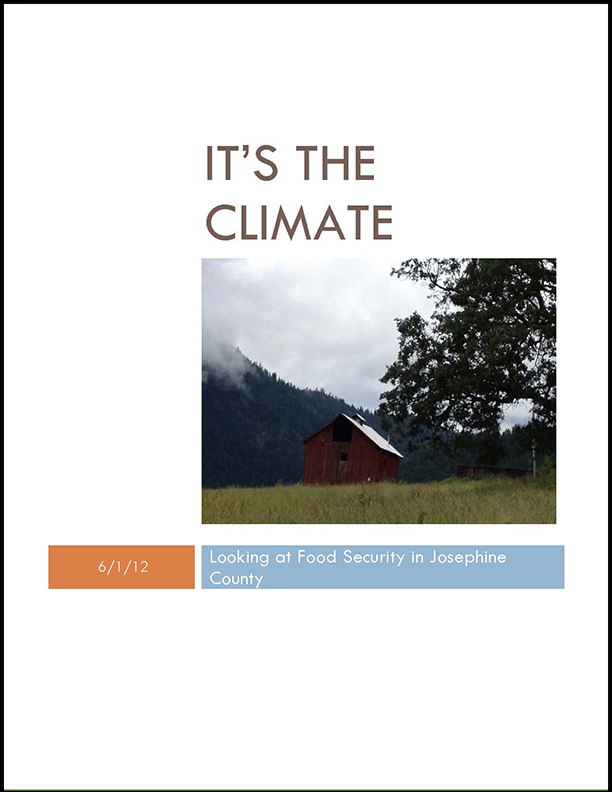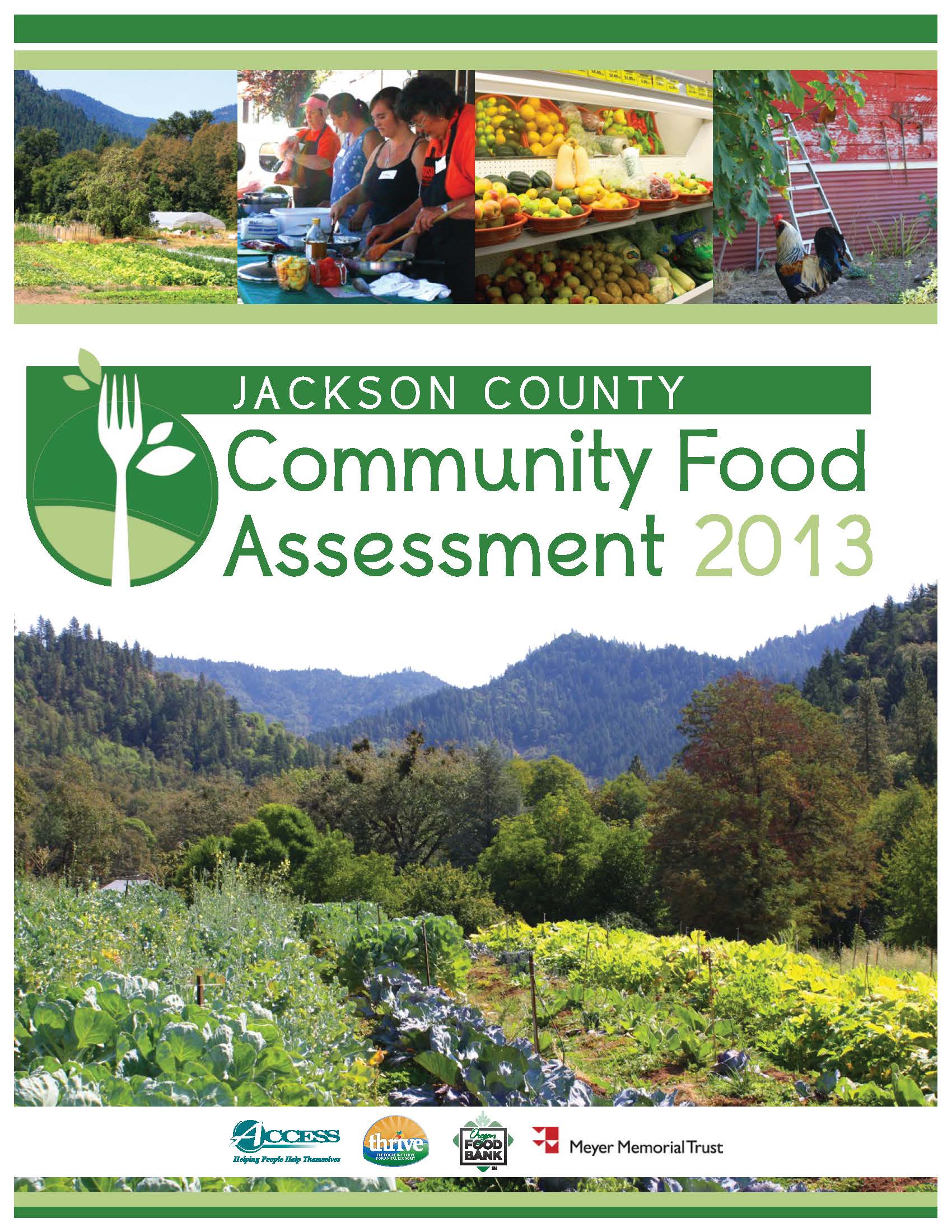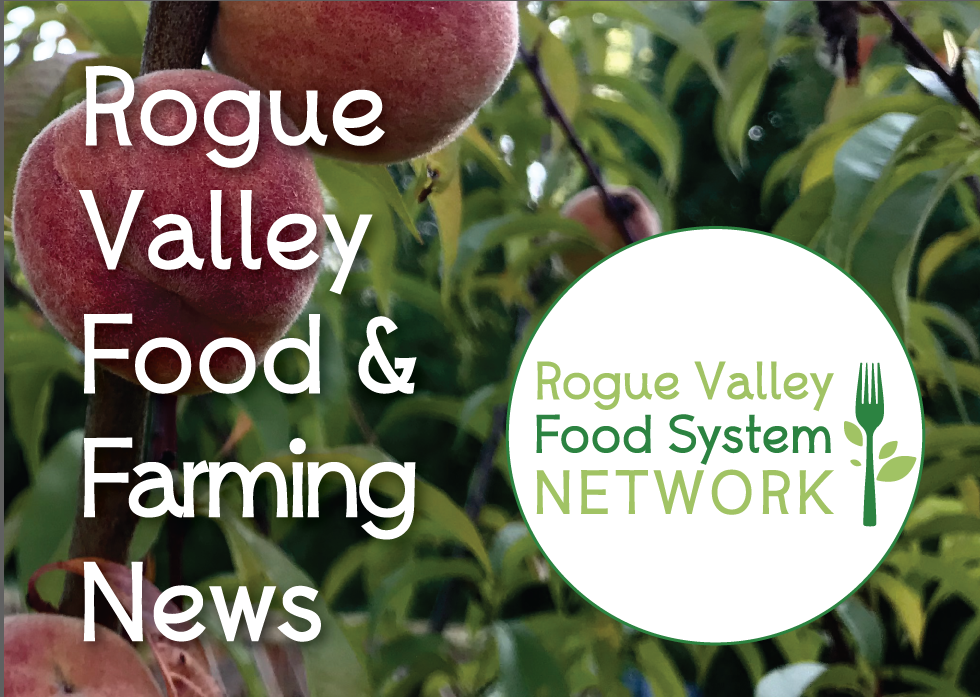What is a Food System?
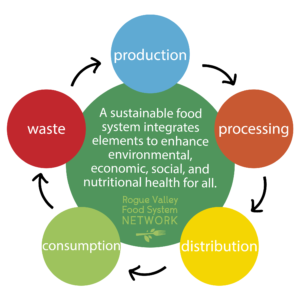
What is a Food System?
A food system is the path that food travels.
It includes the growing, harvesting, processing, packaging, transporting, marketing, consuming and disposing of food. A healthy and sustainable food system integrates all of these elements to enhance economic, environmental, social and nutritional health for all.
We’ve simplified the complexity of a food system into five categories to help connect the dots. These include Production, Processing, Distribution, Consumption, and Waste.
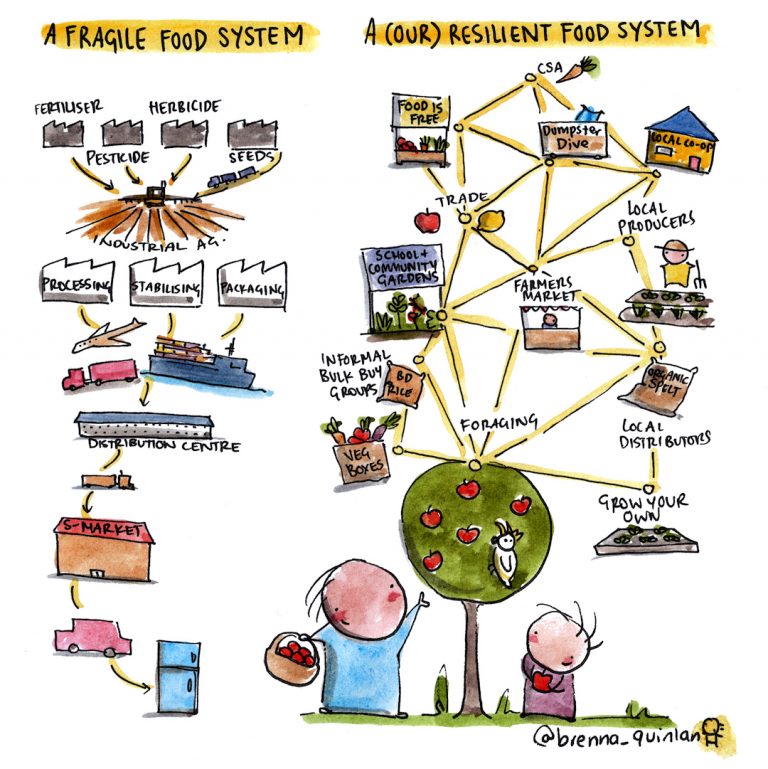
illustration by Brenna Quinlan, Permaculture Illustrator
The production side of our food system includes the farming practices, land use planning, water use and well, just about anything you can imagine that influences how and where our food is produced. Rogue Valley Food System Network supports practices and policies that encourage efficient use of resources, environmental stewardship, and economic sustainability.
The processing of food can make or break our food. To support more access, the Rogue Valley Food System Network works with our members to help provide access to a community kitchen, educational opportunities on preserving all kinds of food, and support for a local meat processing facility.
The distribution of food has a major impact on the environment, the freshness of what we consume, and the economic sustainability of small food producers attempting to compete in a complex marketplace. Our Network supports improvements for distribution of local products to consumers within our region. We work to develop our local food market through promotion of member food producers and artisan drink makers.
The old adage that "you are what you eat," holds true for most people. What we consume either helps us maintain our health, or can contribute to chronic illnesses or even premature death. To this end, to improve our food system as a whole, we must include the important component of consumption and address community food security disparities. Members of our Network address the dangerous deficit between those who have limitless options to purchase high quality food and those of us who face insecurity and scarcity of access.
Finally, a key element of our food system includes waste and the disposal of waste. Conventional food production, processing, distribution, and consumption of food creates untenable quantities of garbage, which pollutes our land and water. This important factor underscores the importance that we "close the loop" to first reduce our waste and then reclaim as much of it as possible. Our Network supports programs like home compost collection and farmers markets in part because they help address this concern.
Assessing the Food System in the Rogue Valley
RVFSN collaborates with a broad group of community partners to understand the food needs of our watershed. Here are two reports from the last decade that assess the state of our food system. This type of analysis helps us better serve the network, and ultimately those who rely on the Rogue Valley for sustenance.

